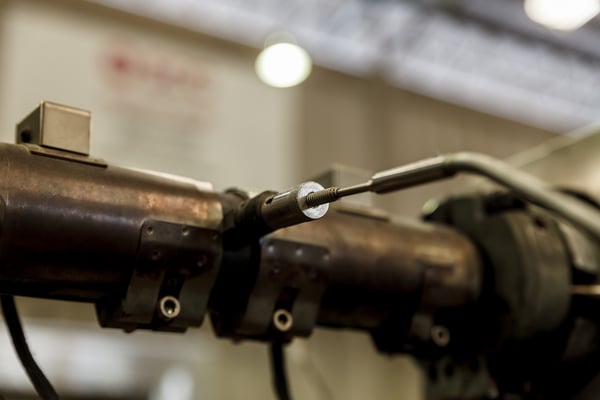Temperature dry wells and baths are a convenient solution for temperature calibrations, both in the field and in laboratories, because of their ability to be a freestanding, stable temperature source with a built-in platinum resistance thermometer (PRT).
The PRT measures the temperature inside the dry well calibrator or calibration bath to indicate the current bath temperature. So do you need any other reference probe or is the dry well/bath adequate to perform a complete calibration?
Dry wells and baths provide very stable, uniform heat sources for calibrations. They are fitted with PRTs to control their temperature. While these PRTs have sufficient accuracy to perform this control function, they are generally not suitable as references for temperature probe calibrations. There are three reasons for this:
- Their accuracy is generally the same as a typical probe (known as the device under test or DUT) that is being calibrated, so they cannot provide the necessary test uncertainty ratio (TUR);
- They are fixed in one location in the dry well or bath, so unless the DUT is placed immediately adjacent to it (which may not be possible or practical), there will be additional errors due to uniformity errors; and
- As the PRT is permanently installed, it is generally impractical to have it recalibrated after the bath or well is installed.
What Temperature Probe Should I Use as Reference?
For these reasons, it is normal practice to use a reference PRT in conjunction with a bath or well for calibrating temperature devices such as PRTs and thermocouples. This PRT will generally have its own separate readout, although some portable wells and baths that are designed for field or plant use have a reference PRT readout built-in, in order to minimize the amount of equipment needing to be carried by the technician. A separate readout will provide a higher level of accuracy. Some baths and wells will also allow the reference PRT to be selected instead of the built-in PRT to control the bath, this provides more accurate temperature control and lower uniformity errors.

How to Setup for Calibrating Reference Probes
The process is straightforward: set the well or bath to the desired temperature set-point and insert the reference PRT and DUTs into the bath liquid or the dry well insert. Position the sensing elements of the reference PRT and the DUTs as close as possible to one another; they can typically be mounted at the same height vertically but at some distance horizontally.
Dry well inserts can have multiple holes, typically with the reference PRT hole in the middle, then one or more DUT holes around it. Baths can usually accommodate many DUTs, and they should be arranged in the tank so as not to impede the flow and circulation of the bath liquid.
When the well or bath has reached the set-point and stabilized, the reference PRT and DUT temperatures should be documented, the well or bath moved to the next set-point, and so on. Tools are available to automate the calibration process, leading to faster throughput and reduced risk of data entry errors.
Given that baths, and to a lesser extent, wells, can change temperature relatively slowly, it may be preferable to have several units, each operating at one set point temperature, and transfer the reference PRT and DUTs from unit to unit. It may also be the case that one bath or well may not cover the entire range of temperature calibration points for the DUT, so in this case, too, more than one unit will be needed.
Related Reading:



